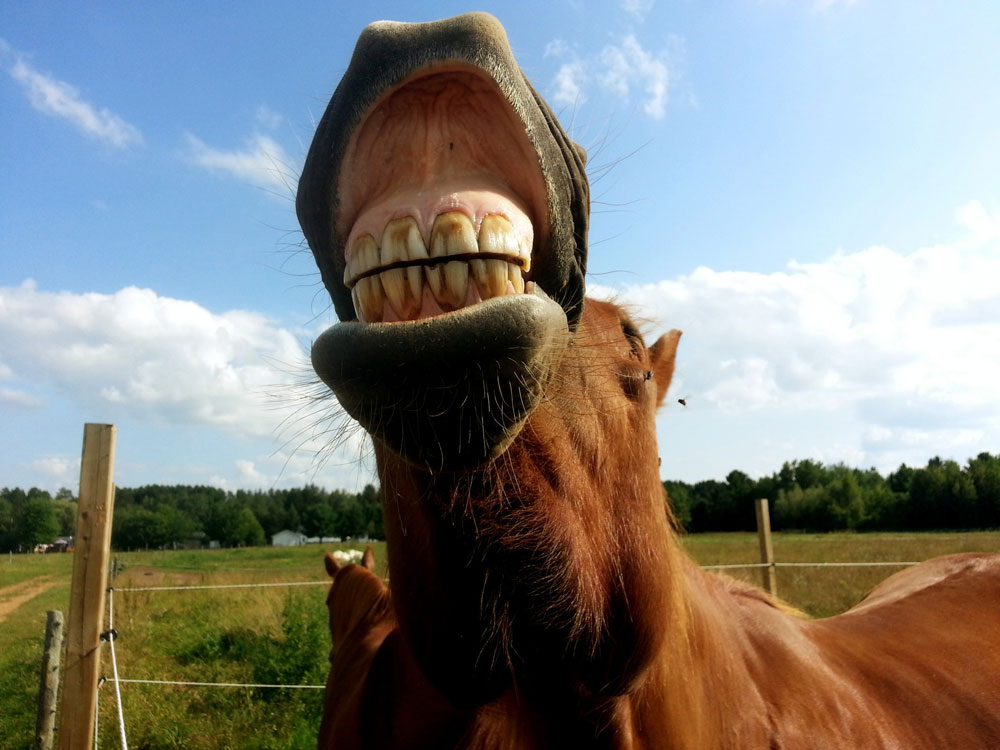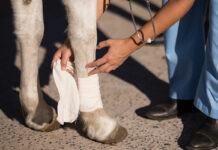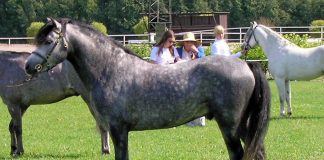
I was proud of my new dental unit. It was a big purchase for my little practice, and accumulating fancy new equipment was a slow process, as I had to find a way to pay for it myself, but I knew this was a smart move and would improve my quality of dentistry tremendously.
I’d always been a little old fashioned about performing dental work on horses, believing that they should only be performed by hand using the long files of varying lengths and angles, affectionately known as “floats,” that I’d been trained to use in vet school. Power floats and electric for horses were just hitting the market when I graduated, and I viewed them with a skeptical eye, as did many of my colleagues. Clients, too were suspicious, and many refused to allow use of power floats on their horses.
Power Tools
Things changed for me on a particularly difficult dental one day. After about 20 minutes of hard, sweaty labor and virtually no progress, I’d given up and called a colleague with a motorized float. We reduced the offending teeth in minutes, and I’d ordered my new electric float that very day.
I wore it out in just under two years, and decided to buy a fancier unit with a vacuum and a built in light. There was a foot pedal, a fan to cool everything, and a water pump to flush the mouth and prevent thermal damage to the teeth.
As these fancy units shortened the time it took to perform a thorough float, they were gaining acceptance and respect, and many clients had become educated about the value of doing dentals with motorized tools. With the advent of the water cooling system, the damage to the teeth was virtually nil, and I had no further concerns about the safety of electric floats.
I was used to fielding questions about the safety of the units, and I had a few pat answers ready for my clients. But a new client named Ramona was not so easy to convince. Her mare had never had her teeth floated, and Ramona was worried.
Mare Glare
“Dr. Diehl, I don’t want that contraption anywhere near my Peaches. She’s very sensitive and high-strung, and she simply won’t tolerate it.”
Peaches was a very fat Arabian mare who drew herself up irately and glared at me. I reached out to pat her neck but reconsidered as she flattened her ears and bared her big yellow teeth at me.
I offered Ramona a big encouraging smile as I explained in detail why I felt that the new equipment was better for the horses, how it was safer, quicker, and easier to use, and traumatized the teeth far less than dragging heavy floats back and forth. I could see her weakening, and she finally caved when I explained that hand floating was almost double the cost of the power floating.
“But won’t the noise scare my Peaches? Purebred Arabians won’t tolerate things like that. I think it may be a big problem for her!”
“She’ll be sedated,” I said reassuringly. “I doubt she’ll even notice.”
Ramona doubtfully gave her consent, and my assistant and I got right to work. Peaches made horrible faces at us, but like many testy mares, backed down almost immediately when my assistant ordered her to behave. She didn’t move a muscle as I listened to her heart and lungs and finally injected the sedative into her vein. Soon we were buckling the speculum on and propping her heavy head onto my headstand. I clipped the light into place and got my first look at Peaches’ teeth.
The front teeth were stained a dark yellow-brown, common and normal for horses grazing on local pastures, but her molars needed quite a bit of work. I reduced sharp cheek and tongue points, leveling and smoothing places where the molar heights were uneven, and pulling down hooks that interfered with chewing. Peaches snored loudly in my assistant’s ear while we worked, completely unbothered by the roar of the float.
Easy Does It
Ramona was hovering behind me; I’d pause and show her what I was doing or let her take a feel of the teeth from time to time. Conversation was impossible over the noise of an electric float, but when we paused to rinse the horse’s mouth or reexamine the teeth, Ramona could ask questions and we could reassure her.
Finally I was finished, and proudly showed Ramona the finished result. It had gone beautifully. There were some old ulcers in the back of her mouth from the sharp points I’d removed, but the sores would soon heal. Taking advantage of the sedation, I also cleaned the mare’s udder, removing an alarming wad of caked grease and dead skin from between the teats. Peaches groggily approved of this, twisting her muzzle into the air and nodding her head happily as I scrubbed away.
We put Peaches into her stall to finish recovering from the sedation and cleaned up the dental equipment. My assistant was coiling the cables back into the carton when I noticed Ramona looking into her horse’s mouth.
“Dr. Diehl!” Ramona barked. “I’m not very happy with this dental work!”
I hurried over. I’d checked the mouth carefully, but maybe a long incisor or a sharp canine tooth remained? I ran my fingers over the smooth rows of molars and looked at Ramona in confusion.
She angrily pointed at Peaches’ upper incisors. “I knew I didn’t like that motor float thing! Look at this, Dr. Diehl. Her front teeth are still yellow!”
COURTNEY S. DIEHL, DVM, has been an equine veterinarian since 2000. She is the author of Horse Vet: Chronicles of a Mobile Veterinarian and Stories of Eric the Fox, first place winner of the CIA EVVY award. She is currently working on her third book.
This article about electric floats for horses originally appeared in the March 2018 issue of Horse Illustrated magazine. Click here to subscribe!
Further reading:
Understanding Your Horse’s Teeth
The Important of Maintaining the Health of Your Horse’s Mouth






